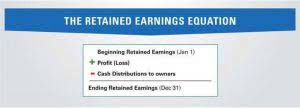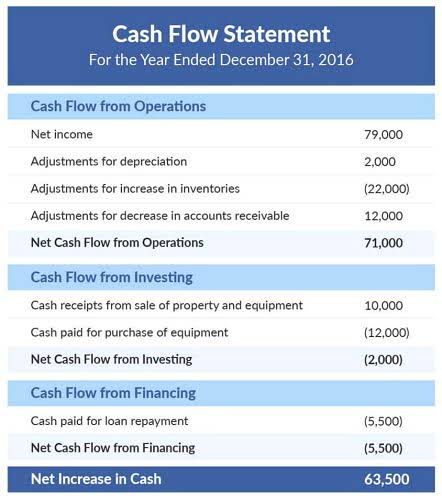
When your business does anything—buy furniture, take out a loan, spend money on research and development—the amount of money in the buckets changes. The accounting system in which only one-sided entry is recorded is known as the single-entry system of accounting. Both cash and revenue are increased, and revenue is increased with a credit. mobile book keeping app Let’s assume that a friend invests $1,000 into your business. Immediately, you can add $1,000 to your cash account thanks to the investment.
This is an area where many new accounting students get confused. Often people think debits mean additions while credits mean subtractions. If an asset account increases (by a debit), then one must also either decrease (credit) another asset account or increase (credit) a liability or equity account. An accounting expression starts with ‘Debit’ and ‘Credit’.
Debits and Credits Outline
The Debits and Credits Chart below is a quick reference to show the effects of debits and credits on accounts. The chart shows the normal balance of the account type, and the entry which increases or decreases that balance. This means that asset accounts with a positive balance are always reported on the left side of a T-Account.
Credit vs Debit Examples
Today, accountants adopt practices like the use of these columns to keep records that are used on a long-term basis. They are also useful for the management in promoting effective decision-making. Similarly, the word «credit» has its historical roots in the Latin word credere, meaning «to believe.» In accounting, this is often abbreviated as «Cr.»

These 5 account types are like edsel dope the drawers in a filing cabinet. Within each, you can have multiple accounts (like Petty Cash, Accounts Receivable, and Inventory within Assets). Each sheet of paper in the folder is a transaction, which is entered as either a debit or credit. In this guide, we’ll provide an in-depth explanation of debits and credits and teach you how to use both to keep your books balanced.
Usually, but not always, no entries are made on the credit side of the accounts kept for expenses. Any increase to an asset is recorded on the debit side and any decrease is recorded on the credit side of its account. At the end of an accounting period the net difference between the total debits and the total credits on an account form the balance on the account. For further details of the effects of debits and credits on particular accounts see our debits and credits chart post.
If expenses exceed revenues, then net income is negative (or a net loss) and has a debit balance. Service Revenues include work completed whether or not it was billed. Service Revenues is an operating revenue account and will appear at the beginning of the company’s income statement. Costs that are matched with revenues on the income statement. For example, Cost of Goods Sold is an expense caused by Sales. Insurance Expense, Wages Expense, Advertising Expense, Interest Expense are expenses matched with the period of time in the heading of the income statement.
Introduction to Debits and Credits
If the revenues come from a secondary activity, they are considered to be nonoperating revenues. For example, interest earned by a manufacturer on its investments is a nonoperating revenue. Interest earned by a bank is considered to be part of operating revenues.
Debit vs. credit in accounting: The ultimate guide and examples

A company selling merchandise on credit will record these sales in a Sales account and in an Accounts Receivable account. Sal records a credit entry to his Loans Payable account (a liability) for $3,000 and debits his Cash account for the same amount. Sal’s Surfboards sells 3 surfboards to a customer for $1,000. Sal deposits the money directly into his company’s business account. Now it’s time to update his company’s online accounting information.
Rules for Income or Revenue Accounts
In this case, Bob’s vehicle account would still increase, but his cash and liabilities would stay the same. Bob’s equity account would increase because he contributed the truck. — Now let’s take the same example as above except let’s assume Bob paid for the truck by taking out a loan. Bob’s vehicle account would still increase by $5,000, but his cash would not decrease because he is paying with a loan. Here are some examples to help illustrate how debits and credits work for a small business.
Owners’ equity accounts represent an owner’s investment in the company and consist of capital contributed to the company and earnings retained by the company. Debits and credits are used in a company’s bookkeeping in order for its books to balance. Debits increase asset or expense accounts and decrease liability, revenue or equity accounts. When recording a transaction, every debit entry must have a corresponding credit entry for the same dollar amount, or vice-versa.
- A company has the flexibility of tailoring its chart of accounts to best meet its needs.
- A current asset representing the cost of supplies on hand at a point in time.
- Using credit is different because it means you exceed the finances available to your business.
- With this, it is difficult to create financial statements.
- Sal’s journal entry would debit the Fixed Asset account for $1,000, credit the Cash account for $500, and credit Notes Payable for $500.
- The credit entry typically goes on the right side of a journal.
The company bills a customer $500 for services performed. Since this is a service, no cost of goods sold is recorded. The company makes a cash sale of inventory to a customer for $100. To debit an account means to enter an amount on the left side of the account. To credit an account means to enter an amount on the right side of an account. Shaun Conrad is a Certified Public Accountant and CPA exam expert with a passion for teaching.
They refer to entries made in accounts to reflect the transactions of a business. The terms are often abbreviated to DR which originates from the Latin ‘Debere’ meaning to owe and CR from the Latin ‘Credere’ meaning to believe. As you can see, Bob’s liabilities account is credited (increased) and his vehicles account is debited (increased). One way to visualize debits and credits is with T Accounts. T accounts are simply graphic representations of a ledger account.
At FreshBooks, we help you protect your profits and time with a powerful bookkeeping service. By integrating with Bench, we help you track every dollar you spend while Bench handles bookkeeping and tax preparation. With us, you’ll know your business so you can grow your business. And good accounting software will highlight that problem by throwing up an error message. If an amount is paid to United Traders (thereby reducing the liability to United Traders), an entry is made on the debit side of United Traders Account.
You would also enter a debit into your equipment account because you’re adding a new projector as an asset. This depends on the area of the balance sheet you’re working from. For example, debit increases the balance of the asset side of the balance sheet. That rule reverses for the liabilities side of the sheet. Use the cheat sheet in this article to get to grips with how credits and debits affect your accounts.








